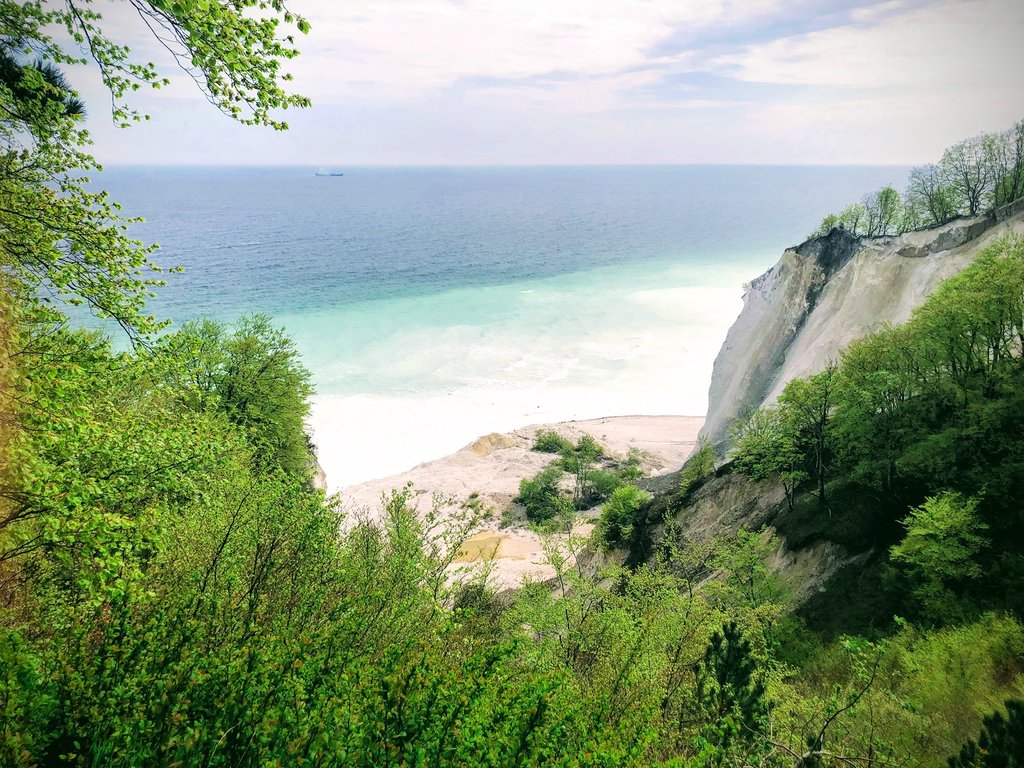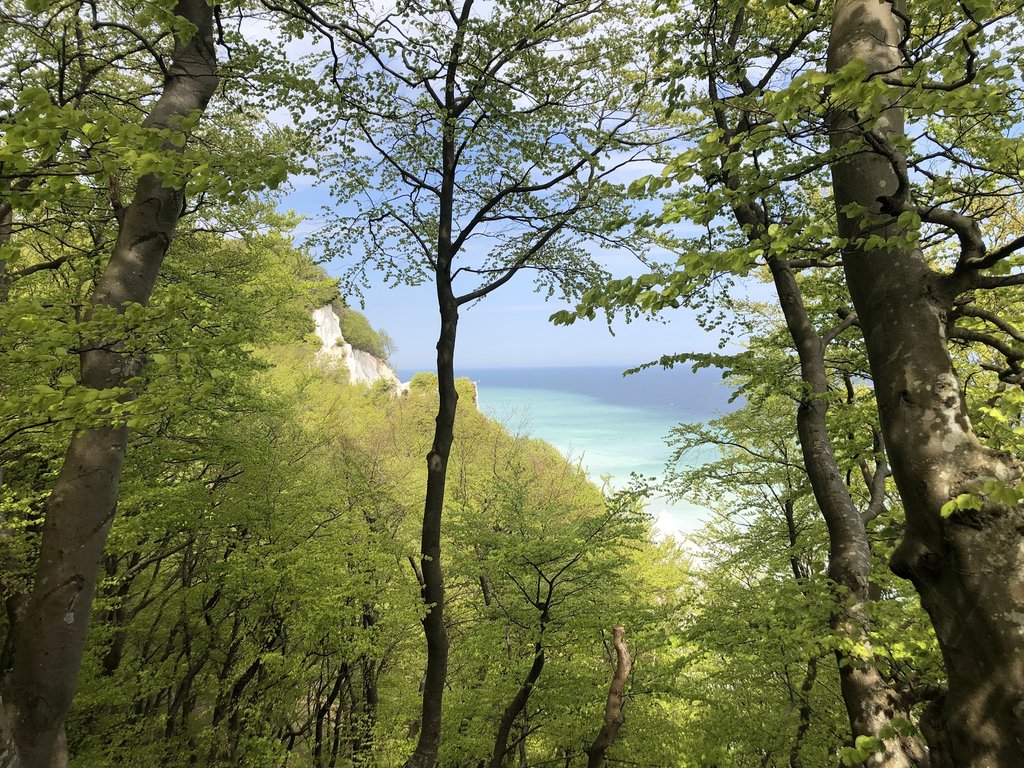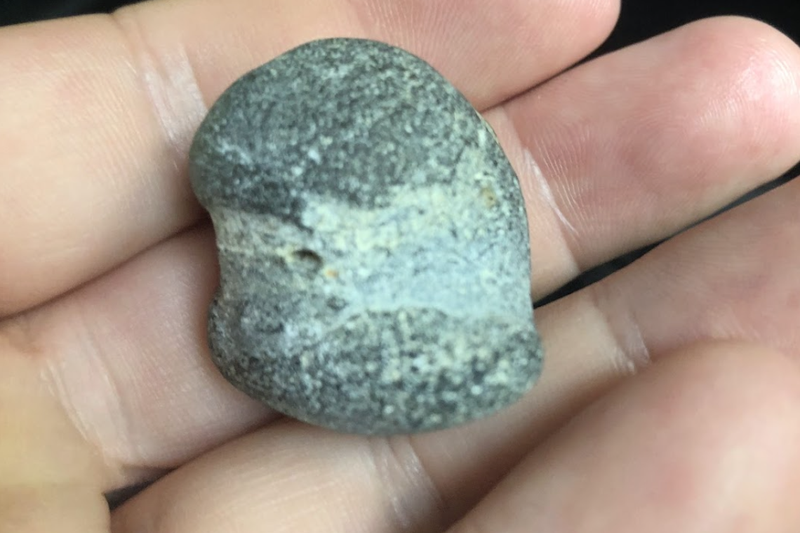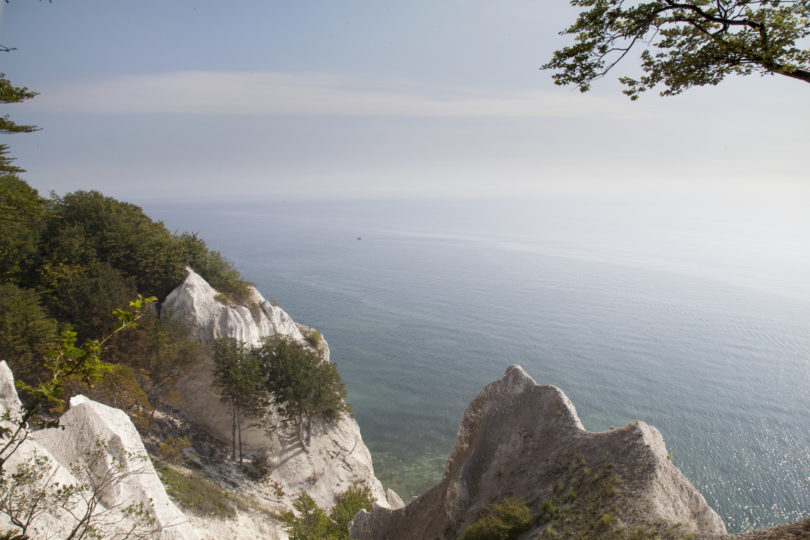The fascinating geology of Møns Klint: a paradise for science and nature
Introduction
Møns Klint, located on the east coast of the Danish island of Møn, is a spectacular natural phenomenon and a real treasure trove for geologists and nature enthusiasts. This imposing chalk cliff attracts naturalists and holidaymakers alike every year with its white limestone walls up to 128 meters high and its rich biodiversity.
Geological history and formation of the chalk cliffs

The chalk cliffs of Møns Klint consist mainly of microscopic calcareous algae, known as coccoliths, which formed the seabed around 70 million years ago, in the late Cretaceous period. Over millions of years, these remains accumulated together with other sediments at the bottom of a shallow, tropical sea that covered large parts of Europe at that time.
During the last ice age, which ended around 11,700 years ago, the area was shaped by huge glaciers. These glaciers pushed the chalk layers together and pressed them upwards, creating the cliffs we see today. The striking black flint layers that can be seen within the chalk cliffs were formed by deposits of organic material and diatoms, whose silicon skeletons solidified into flint.
Flora and fauna of the chalk cliffs
The unique geological composition of Møns Klint creates habitats for a variety of rare plants and animals. The limestone-rich soil favors the growth of around 20 different orchid species, making the cliffs one of the most important locations for this group of plants in northern Europe. The steep cliff also offers ideal nesting sites for various bird species, including the peregrine falcon, which has returned to the area after decades of absence.
Nature conservation and sustainable tourism

The chalk cliffs and the surrounding area have been designated a Natura 2000 protected area in order to preserve biodiversity and geological integrity. Visitors are requested to stay on the designated paths and not to disturb nature by picking plants or disturbing the wildlife. The GeoCenter Møns Klint offers comprehensive information and guided tours that provide insights into the geology and ecology of the region.
Conclusion and visitor information

A visit to Møns Klint is not only an excursion into a breathtaking landscape, but also offers profound insights into the dynamic processes that shape our earth. It is a place that stimulates both the mind and the senses and encourages sustainable thinking.
FAQ
- What activities are on offer near Møns Klint?
In addition to hiking on the well-maintained trails, the area offers opportunities for birdwatching, photography and scientific studies. - Are there special events or programs for visitors?
Yes, the GeoCenter regularly organizes workshops and lectures on the geological and biological diversity of the chalk cliffs. - How does the GeoCenter contribute to the protection of Møns Klint?
The GeoCenter not only conducts research and educational work, but also supports measures to preserve the natural landscape and raise public awareness of environmental protection.

